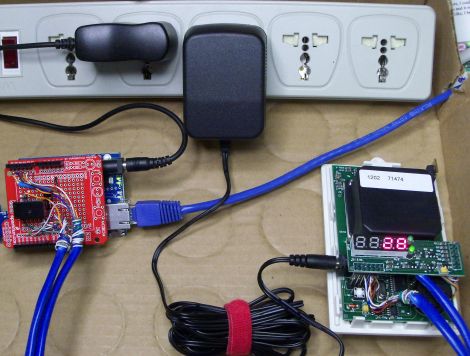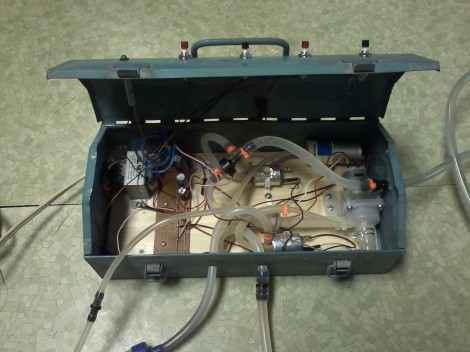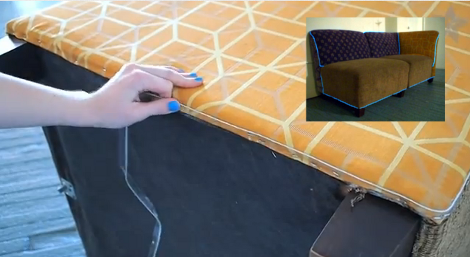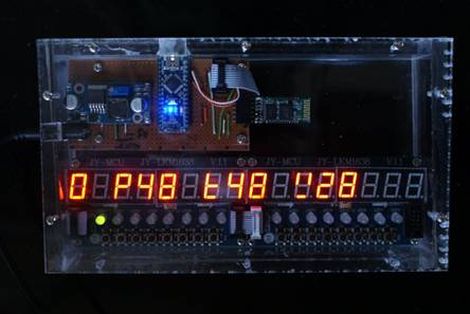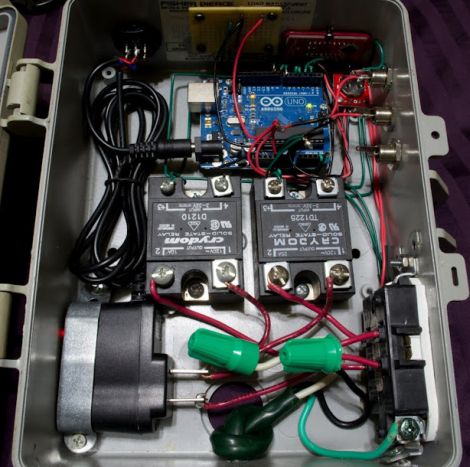
[Kyle Gabriel] moved into a house with a nice tract of land behind it, but due to his busy schedule he had yet to plant the garden he so desperately wanted. He worried that his hectic life and busy hours would lead to accidentally neglecting his garden, so he built a water collection and automated irrigation system to ensure that his plants never went without fresh water.
The system is fed by two large 55 gallon barrels that collect rain from his gutters. A 1/2 HP well pump is used to pressurize the collected water, which is then dispensed throughout his garden by a sprinkler. [Kyle’s] system is run from a small control box where an Arduino is used to control the pump’s schedule. At a predefined time, the Arduino turns the pump on, while monitoring the system for potential problems.
If the system starts running low on water, the Arduino triggers the valve on his spigot to open, keeping the water level above the pump inlet pipe. He also keeps an eye on pump’s outlet pressure, indefinitely disabling it before a blockage causes the pump to cycle repeatedly.
He says that the sprinkler system works quite well, and with his modular design, he can add all sorts of additional functionality in the future.

